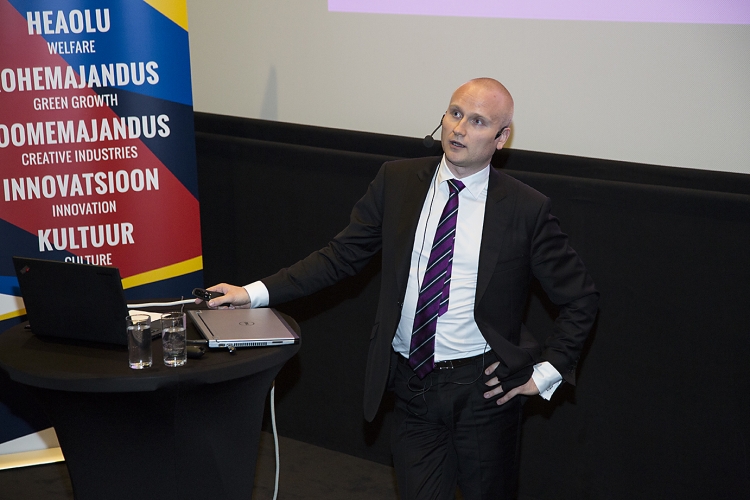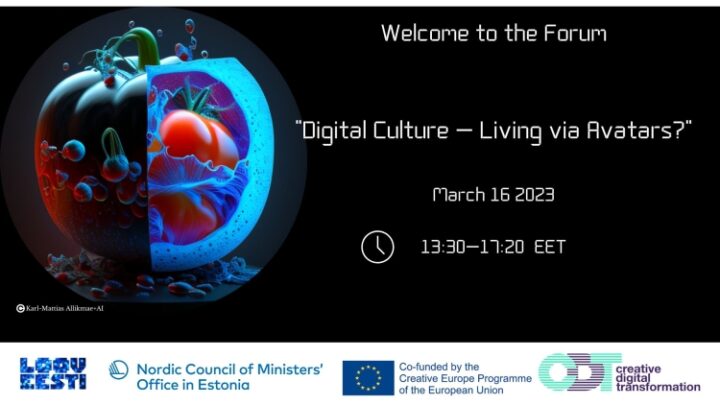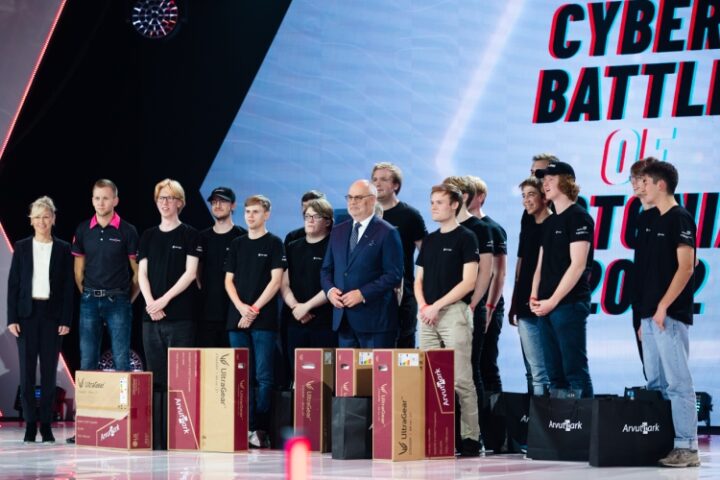Dream Broker CEO Mika Ahokas at the CI financing forum 2015: Nordic countries and Baltic States should promote themselves as one

Mika Ahokas, the CEO of the rapidly developing and expanding Finnish video software company Dream Broker, said at a creative industries financing seminar organised by the Nordic Council of Ministers’ Office in Estonia that companies from the Nordic countries and Baltic States should work more closely together in advertising the entire region.
Mika, what has made your team such a success?
Our biggest plus is that we’re first and foremost a true team, not just a group of strong personalities. Everyone in that chain is in and of themselves a strong link, but all of us are capable of playing as a team.
What can get in the way of a company’s growth?
The first thing is problems with your team – lacking the skills you need or an inability to realise your ideas. To be a success you also have to be quick to understand what there’s demand for. And vice versa – you shouldn’t rush in to things. With us at Dream Broker, for example, we spent our first couple of years working on the local Finnish market, trying out our concept, and we achieved a certain position there before we started expanding.
Could the Nordic countries and Baltic States work together on the enterprise market, and if so, how?
Companies in this part of the world should definitely be working more closely together in promoting the region. Taking them separately they’re all small countries, but put together they form a pretty substantial market with tens of millions of people, which is on a par with the likes of England. In terms of enterprise culture, skills and buying power the region is globally competitive; the problem is fragmentation, which is stopping it from achieving the visibility it needs.
A good example of cooperation in promoting the region is Slush Helsinki, which was born from an idea had by a group of individual enthusiasts. For my own part I’d like to see more cooperation along those lines, including at the national level. Although governments and umbrella organisations often do some really good work in supporting enterprise, they tend to do it separately.
creative industries financing forum
The creative industries financing forum held at the Artis cinema in Tallinn on 8 September, entitled ‘Is investment in creative industries gambling?’, was designed to bring together investors and companies from the Nordic countries and Estonia to discuss underfunding in the creative economy sector. The organisers – the Nordic Council of Ministers’ Office in Estonia, Creative Estonia, the Finnish Institute and the Dutch embassy in Tallinn – sought to focus on boosting the product development and innovation and export capacity of creative companies by finding financing opportunities.
In his presentation, Mika Ahokas underscored the following:
STRATEGY
What’s most important is that your company has a strong strategy. You have to be sure you’re operating on the right market and whether that’s enough. A lot of companies focus on the wrong market, or on too narrow a market. You simply can’t generate demand where there is none. That’s why you have to take the time for proper analysis and choose the right market. It’s an idea before expanding as well to test your product on a smaller market.
BUSINESS MODEL
Another important aspect is your business model, which should support your strategy. Who are your clients? What are your products? What service model or sales strategy are you planning on using? The decisive factor may end up being what your production capacity is. If it’s not high, you’ll have to raise additional capital pretty early on. The more productised your product or service is, the easier it’ll be to expand with it into new markets..
RESOURCES AND STRUCTURE
Once you’ve chosen your strategy and decided on your business model, you can start weighing up what resources you’ll require. What skills will your team need to have? Things along those lines. If your company expands, or that’s what you’re planning, it’s important to understand what stage of development it’s in. The resources, capacity and so on that you’ll need to build up your company will depend on that, too. A growing company often needs structural changes at some stage. Once a company’s established itself on the market, the start-up operating model that allowed you such autonomy and flexibility needs to be pushed forward to a more regulated and structured enterprise model.
COMPETITIVE EDGE
Being competitive isn’t enough. You have to have something at which you’re quite literally the best. This is particularly important if you’re trying to succeed in global competition. What’s your company’s one big advantage? What is it you have to offer that others don’t? Dream Broker, for example, is the most user-friendly software of its kind – it allows anybody, in any company, to easily make and share videos.
Speaking to Mika Ahokas and making a summary of his presentation was Eva Toome from the Finnish Institute in Estonia. View photos from the forum at our picture gallery, presentations are available here.


